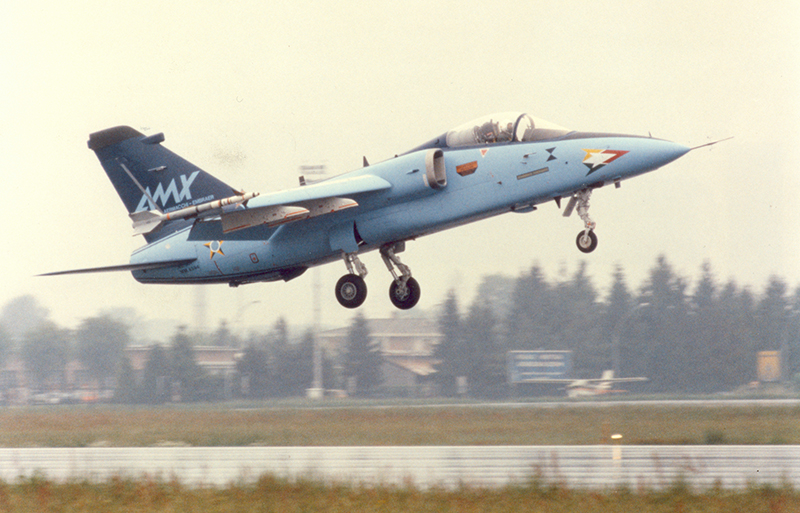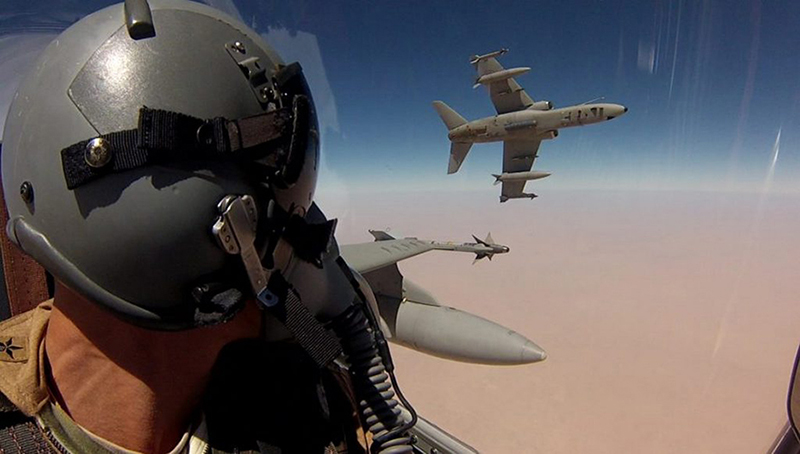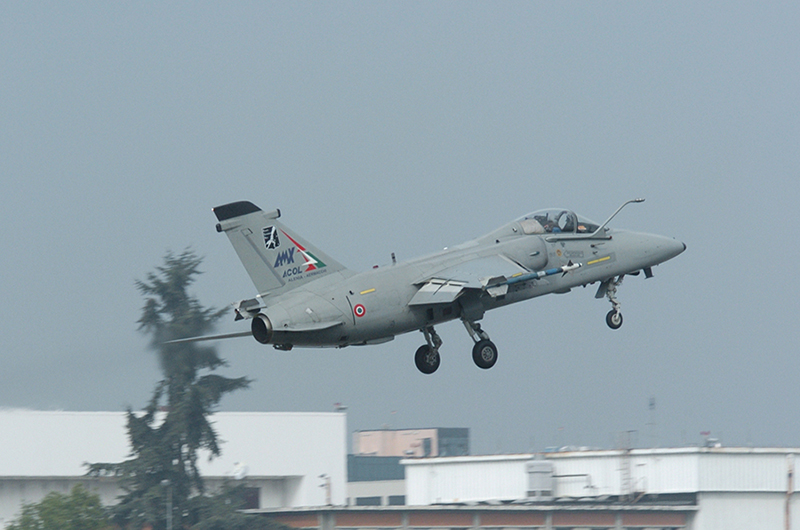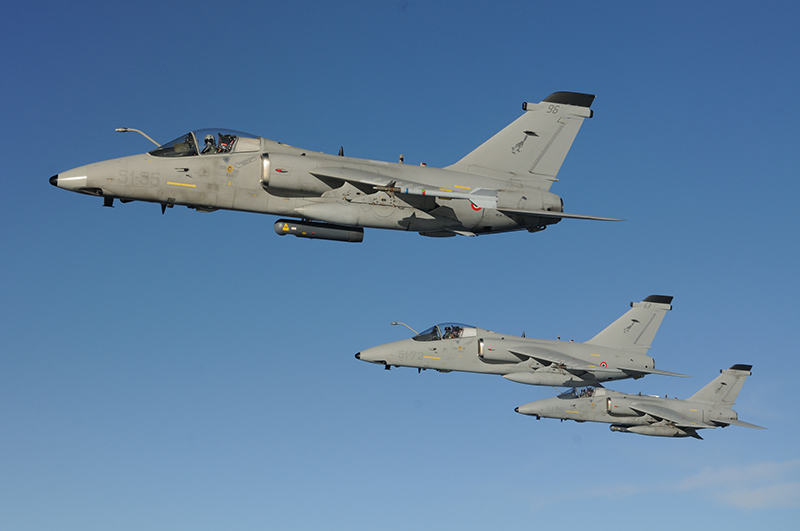The AMX (Aeritalia Macchi Experimental), recently called A-11B Ghibli by the Italian Air Force, is a single engine jet, high swept-wing, ground attack and tactical support aircraft produced in Italy and Brazil during the 1980s and 1990s in a joint venture between the former Aeritalia (46.5%), Aermacchi (23.8%) and the Brazilian Embraer company (29.7%).
A total of six prototypes were built, and 110 single-seater and 26 two-seater aircraft were ordered by the Italian Air Force – the latter designated AMX-T (TA-11B in Italian Air Force nomenclature) – while Brazil ordered 56 aircraft, all delivered from 1988 onwards.

Operational use
The Italian AMX aircraft exceeded an impressive total of 235,000 flight hours, including operational flight hours and those accumulated during the testing phase (around 2,200) beginning in May 1984, when the prototype first took off at Turin-Caselle airport.
The Italian Ghiblis have served in a number of operational theatres where they have proven their effectiveness, low operating costs, high efficiency and ability to adapt to environments very different from those for which the AMX was initially envisaged. This versatility has proved very useful not only in military roles involving close air support and interdiction, but also in the civilian context. AMX aircraft have frequently conducted also reconnaissance missions in response to natural disasters, such as the L'Aquila earthquake in 2009 and the Stromboli volcano eruption in 2019.
The AMX currently holds a historic record; it has over 18,000 flight hours in live operations, making it the most used tactical aircraft of all time by the Italian Air Force in out-of-area missions.

The ACOL upgrade
A crucial milestone in the history of the AMX, was the ACOL (Adeguamento delle Capacità Operative e Logistiche) upgrade, which covered the operational and logistical capabilities 42 single-seaters and 10 two-seaters of the Italian Air Force. This programme was jointly implemented by the former Alenia Aeronautica and Aermacchi in collaboration with the RSV (Reparto Sperimentale di Volo – experimental flight department) of the Italian Air Force for development activities. It extended the aircraft's operational life and ensured the maintenance of its tactical efficiency until the new Lockheed Martin F-35As and F-35Bs – successors to the Tornado and AMX – reach full operational capacity.

This ACOL upgrade, initiated in 2003 and completed in July 2012, involved adding an Inertial/GPS navigation system, new high-precision weaponry. The Litening pod was integrated for target illumination and laser targeting, while the RecceLite became the main reconnaissance sensor, with the ability to take and transmit real-time photographs and videos via a broadband digital data link. Friend/Foe communication and identification systems were also upgraded to the NGIFF (New Generation Identification Friend or Foe) standard, and all cockpit panels on the single-seater aircraft were made compatible with pilots’ night vision (NVG) systems. To enable pilots to handle these new operational capabilities effectively, the cockpit was updated with a modern multifunctional LCD colour display supported by a powerful Computer Symbol Generator (CSG) with Digital Map functions. The first ACOL was delivered to the operational squadrons in August 2007.

Today, the Italian Air Force’s ACOLs equip the 132nd Fighter Bomber Reconnaissance Squadron of the 51st Wing at Istrana Air Force base.
For its part, Brazil is moving ahead with its own modernisation programme, identified as A-1M, on 11 of its 20 remaining AMX aircraft. The Força Aérea Brasileira expects the fleet to remain operational until 2025.
An AMX for test flights at the Caselle Aeronautical Museum
The Leonardo Aeronautical Industry Museum located at the Leonardo Aircraft Division factory at Caselle and inaugurated on 19 November 2020, hosts several unique aircraft built by glorious brands now unified in One Company Leonardo. These include one of the AMX aircraft used for test flights, for example the tests for military satellite communications system called SICRAL (Sistema Italiano per Comunicazioni Riservate e Allarmi - Italian System for Secure Communications and Alerts). This MM7195 was donated by the Italian Air Force to Leonardo’s Aircraft Division in 2016. Having previously stood abandoned for many years at Caselle, it is now perfectly restored and maintained for exhibition activities by the members of the Gruppo Amici Velivoli Storici (GAVS) and the Seniores Volontari at Leonardo in Turin. The MM7195’s most distinctive feature (apart from the various interior devices for satellite communication to the net-centric network of the armed forces, peculiar to the SICRAL system) is the large SATCOM antenna on the spine of the fuselage.
Italian Air Force, Luca La Cavera and Archivio Leonardo photos

